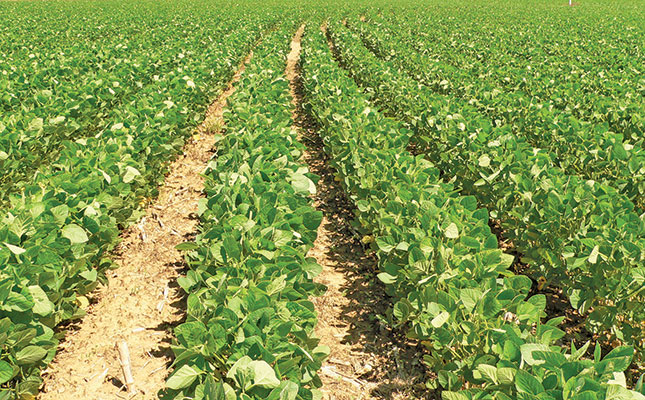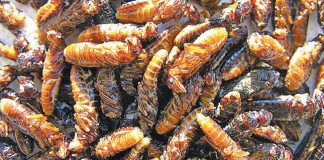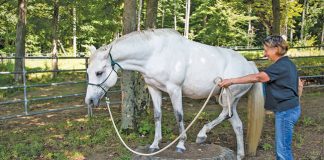
Photo: FW Archive
The expansion of South Africa’s soya bean industry is a success story that has led to more sustainable cultivation practices, greater processing capacity, and the substitution of imported soya bean oilcake and oil with locally produced products. In business terms, it has been a win-win situation for all involved.
The grain and oilseed industries have found a way to fund technology and cultivar development in open-pollinated lands (crops pollinated naturally by birds, insects, wind, or human hand) in South Africa by means of a breeding and technology levy.
In 2016, the South African Cultivar & Technology Agency (SACTA) was created to collect and administer breeding and technology levies for self-pollinated crops in South Africa.
SACTA is not linked to a specific commodity. It addresses only the need to advance the breeding of self-pollinated grains and oilseeds by collecting a levy at the first point of sale or delivery and paying breeding and technology levies to seed companies and plant breeders based on estimated market shares.
According to Gert Heyns, former CEO of SACTA, an investigation into the viability of the current soya bean breeding and technology levy system recently conducted by the Bureau for Food and Agricultural Policy indicated that the levy system was a “landmark breakthrough” in keeping the soya bean industry viable and ensuring that farmers gain access to the latest varieties and technologies.
Heyns adds that, for a long time, open- pollinated crops barely survived, and the levy system was the missing cog the seed industry needed. Now the industry is able to operate more effectively when it comes to accessing new seed varieties and biotechnology.
Improved grain
“The system benefits the entire value chain,” notes Heyns. “Farmers get new germplasm [seeds kept for the purpose of plant breeding and other research] and technology. The seed suppliers receive an income to reinvest in breeding, and the downstream value chain benefits due to improved grain and more local material.”
During the 2021/22 production season, the area planted to soya bean was 925 000ha, compared with 46 000ha in the 1992/93 production season. The local production of soya bean increased from 1,3 million tons during the 2016/17 season to 2,09 million tons during the 2021/22 season. During this period, the area planted to soya bean increased from 574 000ha to 925 000ha.
Although this was also driven by profitability, the promise of new improved varieties and technologies created the platform for growth and confidence, and farmers started to look to soya beans as a viable rotation crop option across a broader production area, according to Heyns.
The current upward trend in production is expected to continue, with new technologies and cultivars becoming available to farmers.
With a proven functioning royalty-capture system in place, seed companies are willing to bring more technology to South Africa, even though this country is a relatively small soya bean producer where more than 80% of seed used are farm-saved seed.
In the recent past, 56 new soya bean varieties have been registered in South Africa, substantially increasing soya bean variety choices for farmers, and making the industry more competitive. An additional benefit has been the lowering of seed prices.
Higher yield potential
He explained that seed companies have also started with trials to initiate the deregulation process for new traits and varieties. In August 2021, the first of these, Intacta Roundup Ready2 Pro, was launched. It is the second genetically modified (GM) soya bean trait to be approved for cultivation in South Africa (the first Roundup Ready soya bean trait was approved back in 2001).
This means that local farmers now have access to technology that has been available on the global market for the past six years. Also, newer varieties containing the trait can be imported for cultivation.
These cultivars have a higher yield potential and are currently in registration trials. It is expected that small quantities of seed might even be available for the next planting season.
Two other companies are also in the process of deregulating their traits, and these could be available to the market by 2025/26, further broadening farmers’ choices.
How the levy works
South Africa’s soya bean yield has the potential to increase by 50% over the next five years with new seed germplasm, GM technology, precision farming technology, and improved farm practices, he says.
The breeding and technology levy is a statutory levy under the Marketing of Agricultural Products Act of 1996. The following factors are important:
- The amount cannot be higher than 5% of the commodity price;
- Administration fees cannot exceed 10% of net income; and
- Twenty per cent of the collected levy has to be spent on transformation.
Negotiations between producers, farmer organisations, and seed companies resulted in a levy for soya bean of 1,2% of the previous two years’ average SAFEX price of soya bean per ton at the time of application, with 1% going towards germplasm owners with plant breeders’ rights and 0,2% to the company/s owning the biotechnology traits.
During the Grain SA congress earlier this year, it was agreed to keep the levy at 1,2% for the next two years.
Of the collected amount, approximately 5% is allocated to administration and collection services, and 20% to development/transformation. Of the remaining 75%, 16,67% is allocated to the GM trait owner/s. The remainder goes to the owners of the germplasm in accordance with their market share, as well as to additional research that includes surveys and industry information.
Return on investment
According to Heyns, the agriculture sector and South Africa cannot be self-sufficient when 70% of wheat and 80% of soya bean are planted with farm-saved seed without some return on investment to seed companies. In the past, the consequences of this practice have been felt in severely reduced investment in new cultivars and breeding programmes.
This has negatively influenced yields and competitiveness. The breeding and technology levy should also not be seen as a way to divert farmers’ profits into the pockets of officials.
The SACTA levy should rather be seen as a method to drive innovation in the value chain and an investment in the sustainability of the grain market in South Africa. It is aimed at improving farmers’ profits and crop productivity.
The levy enables breeding programmes to afford access to new sources of germplasm, biotechnology, better equipment, tools and infrastructure, and to participate in the value chain with international expertise, he said.
Visit sactalevy.co.za.










